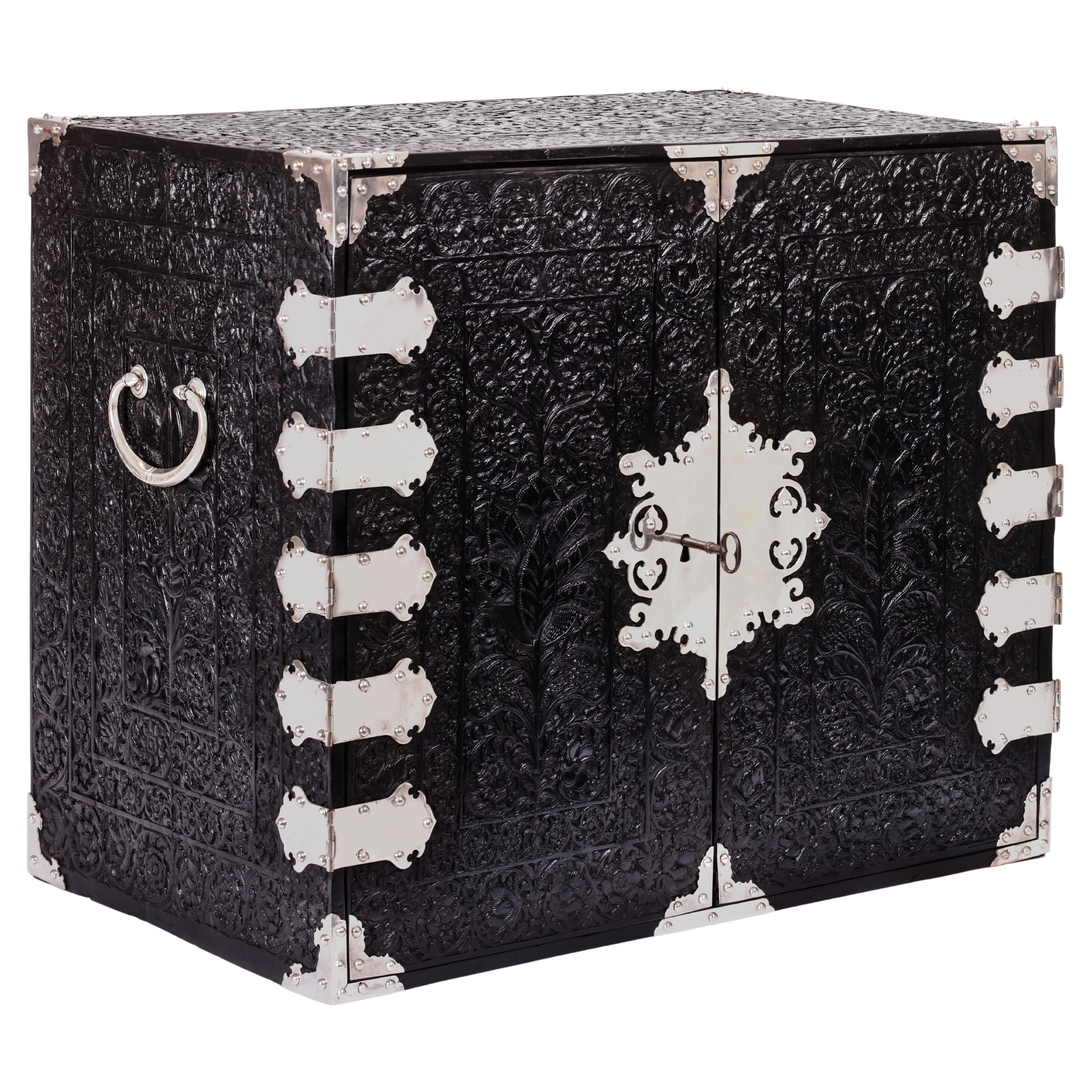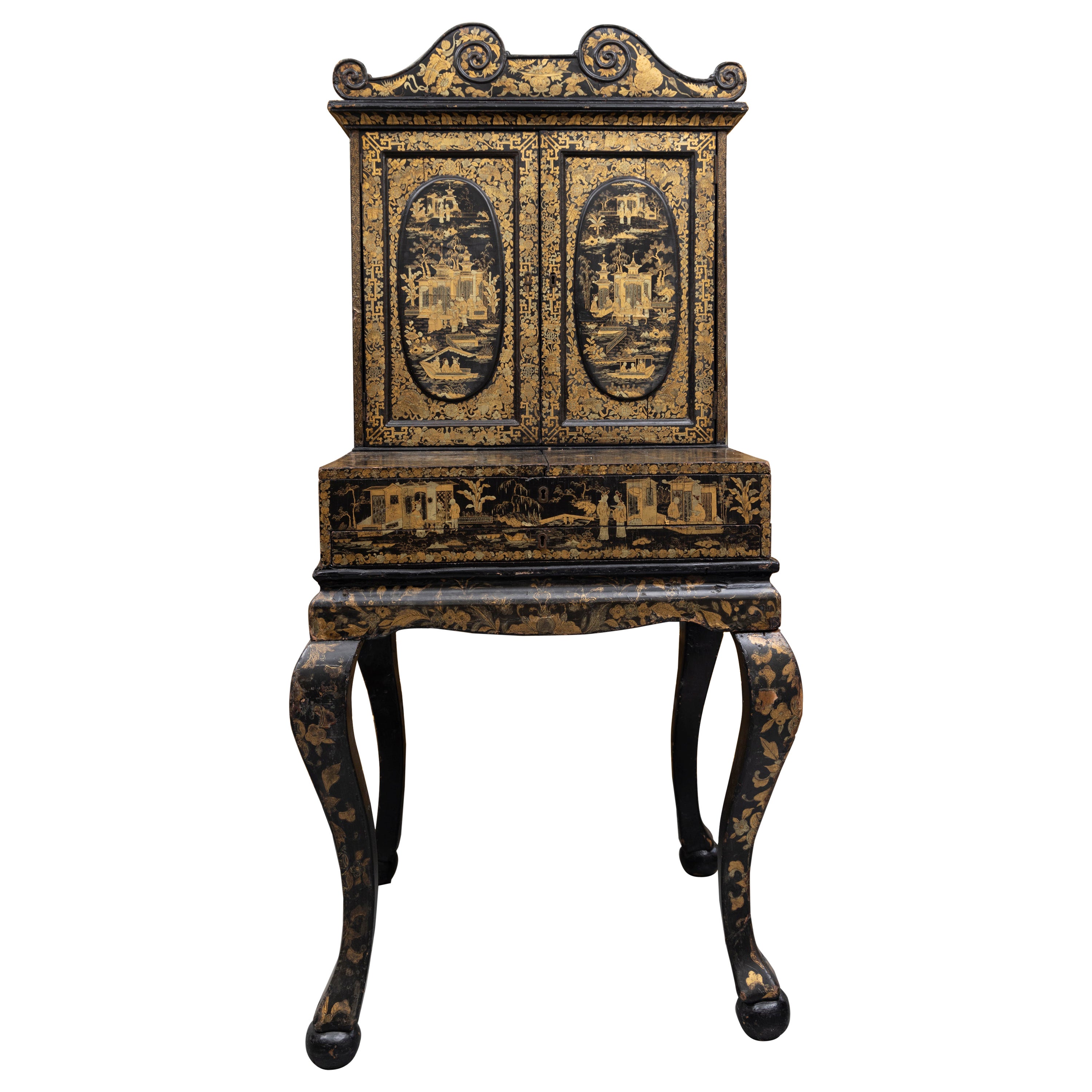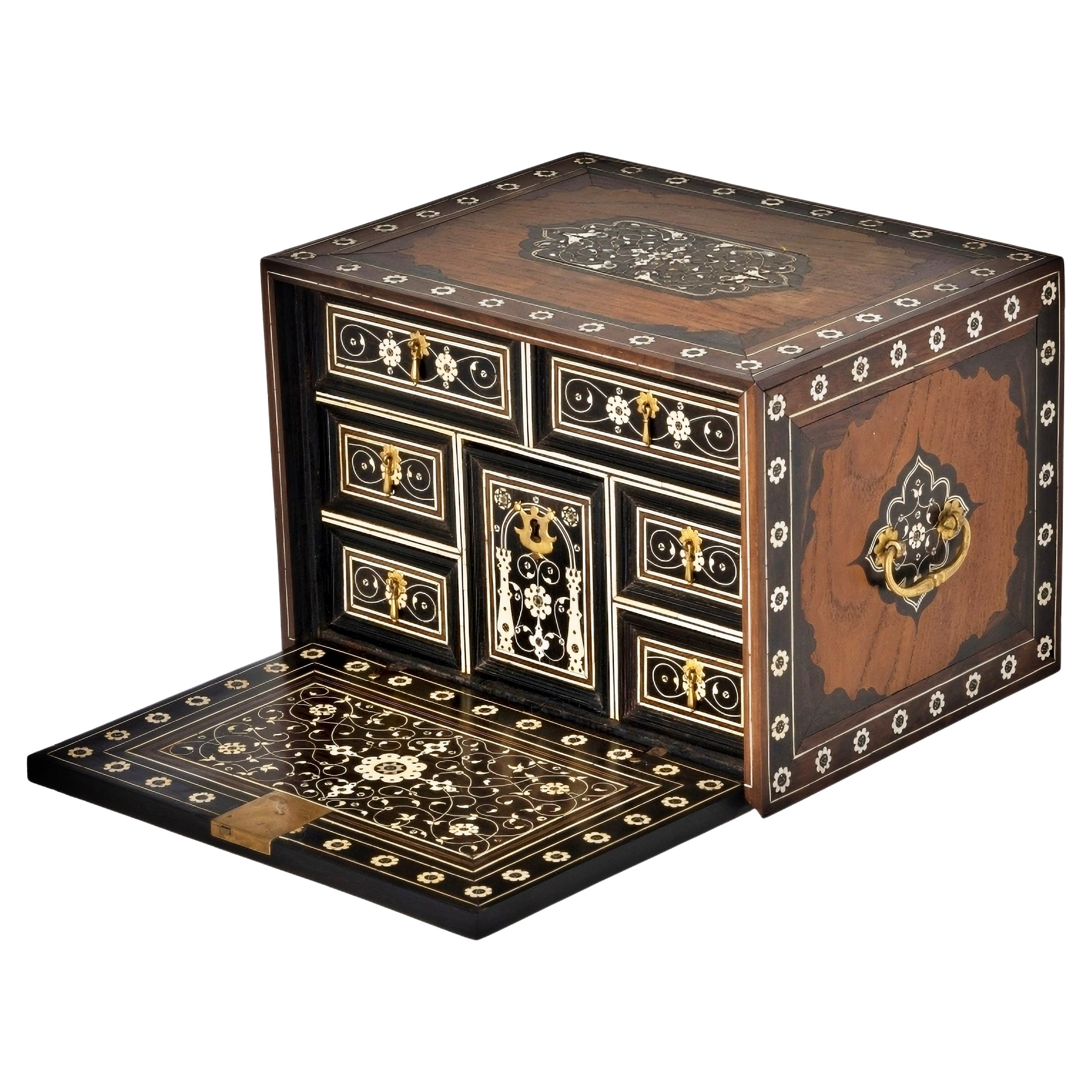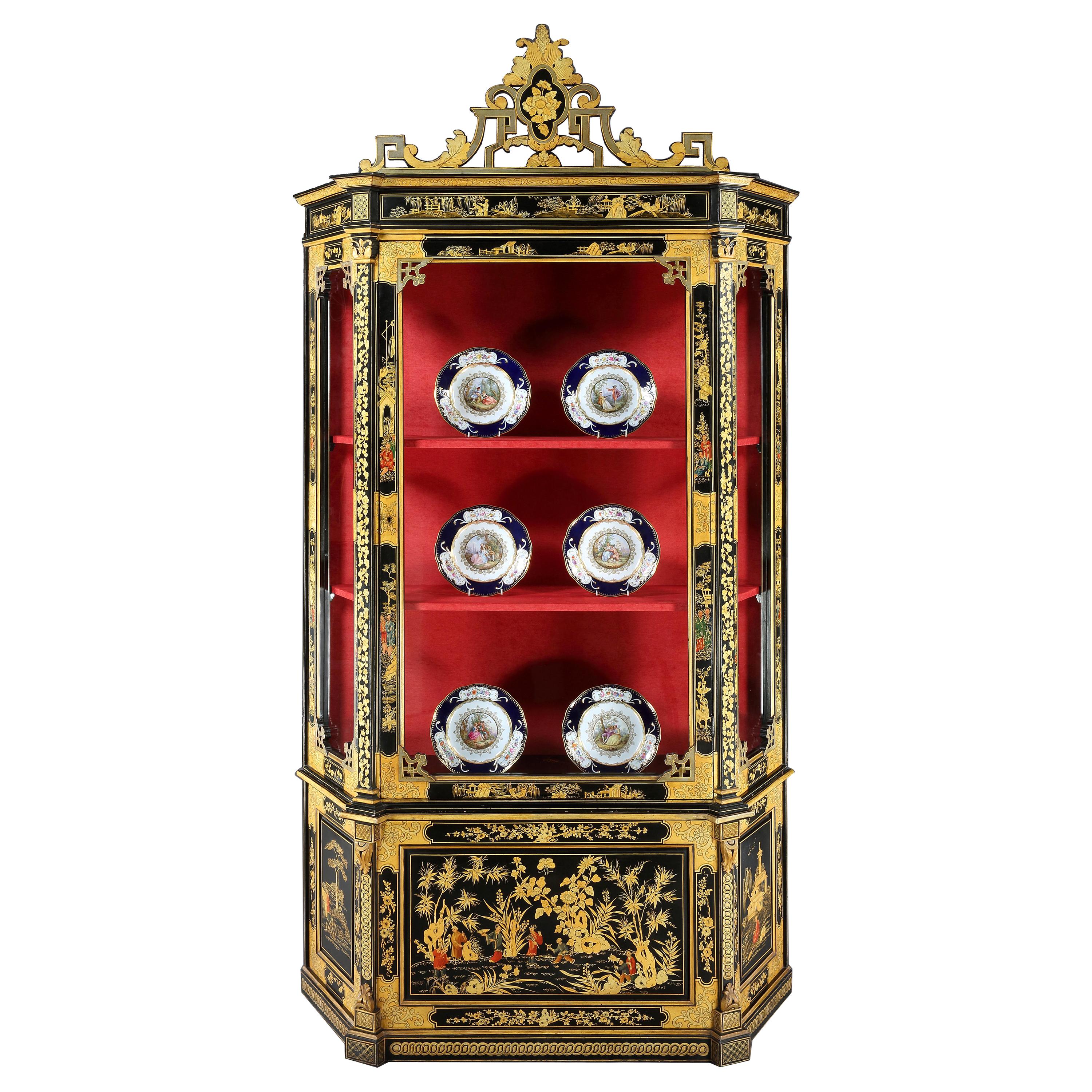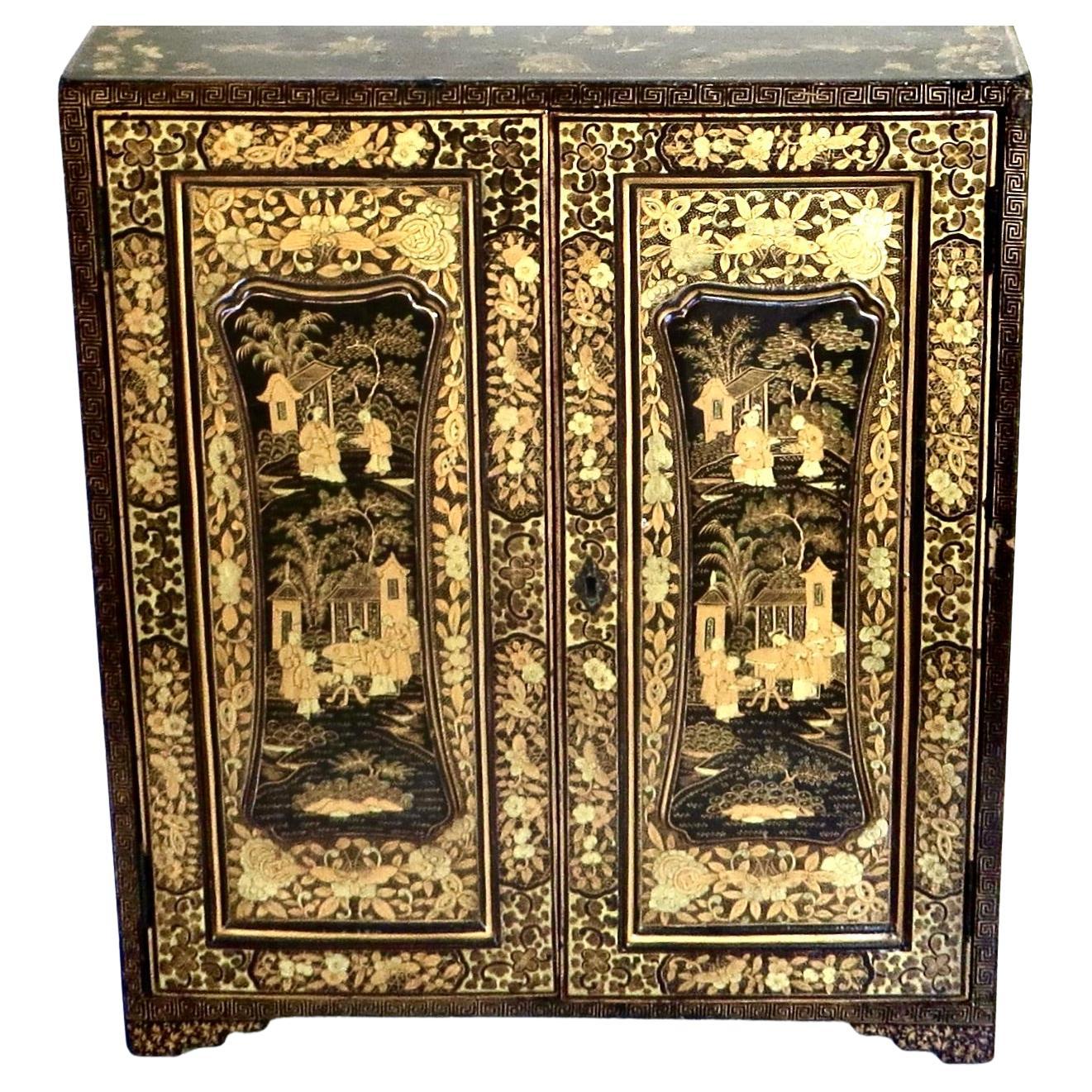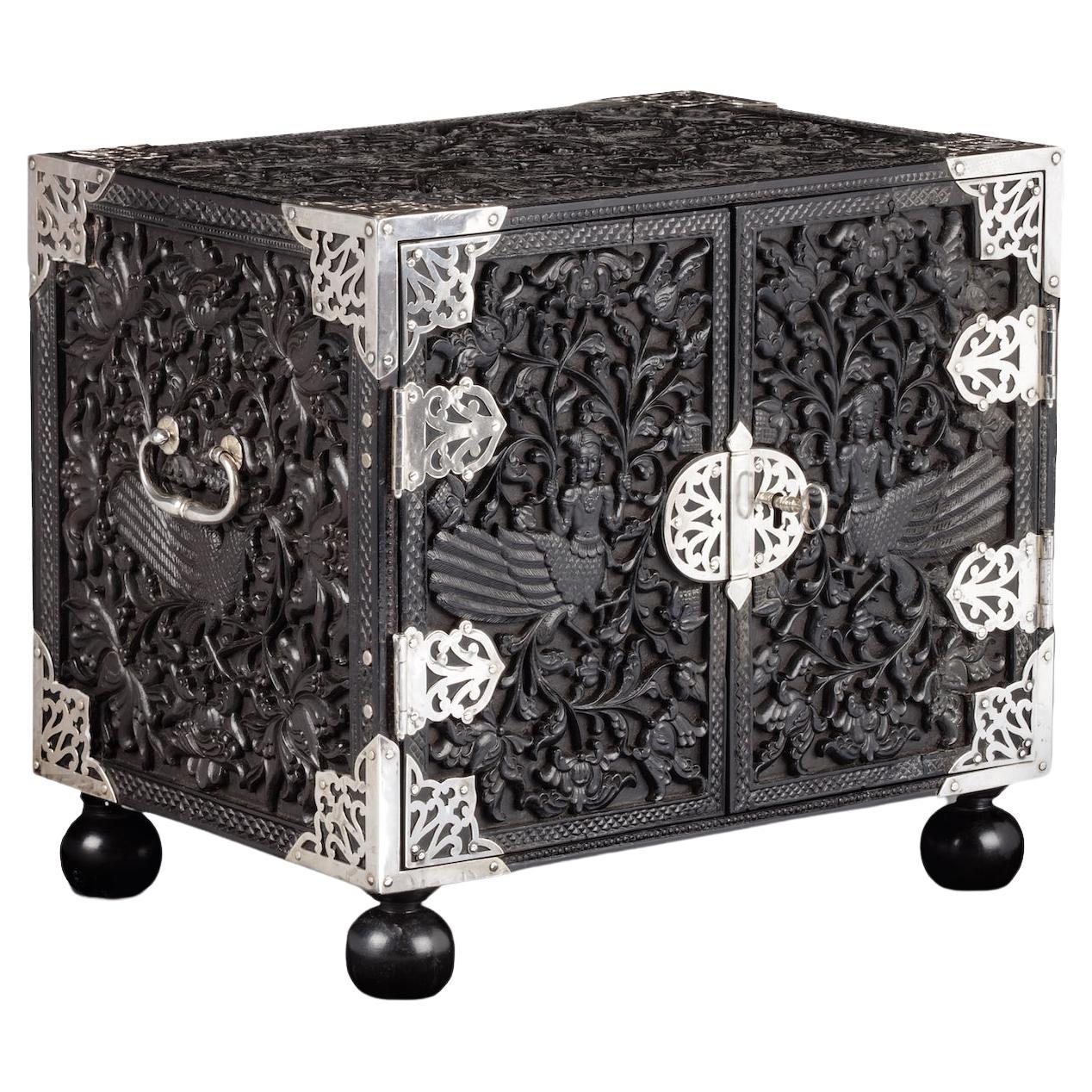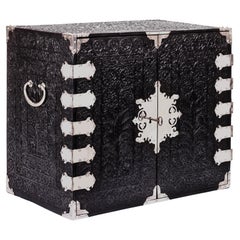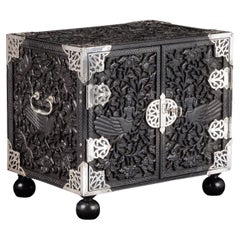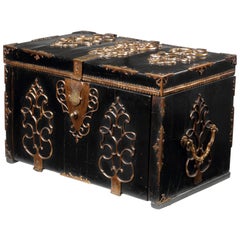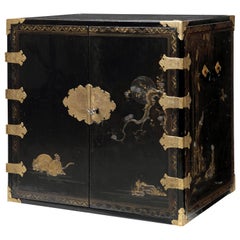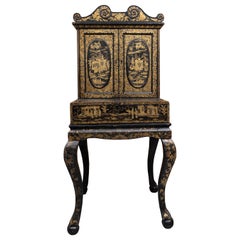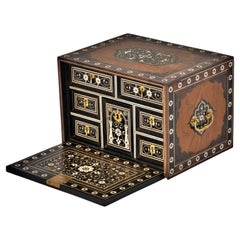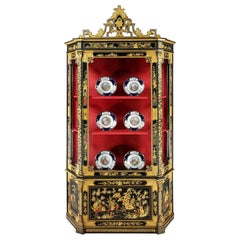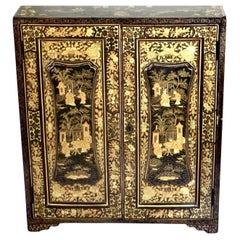Items Similar to A large Dutch colonial ebony cabinet with brass mounts
Want more images or videos?
Request additional images or videos from the seller
1 of 5
A large Dutch colonial ebony cabinet with brass mounts
$184,601.97
£138,370.62
€156,250
CA$253,611.72
A$283,133.64
CHF 148,357.77
MX$3,465,833.61
NOK 1,884,145.14
SEK 1,776,509.64
DKK 1,189,432
About the Item
A Dutch colonial ebony cabinet with brass mounts on contemporary black steel frame
Batavia (Jakarta), 2nd half 17th century
The cabinet has two massive ebony doors opening to reveal thirteen various-sized drawers. The outside of the cabinet and the drawer fronts overall densely carved with scrolling vines and flowers. When closed, the doors show two small snakes turned away from each other in the upper center. The brass mounts probably later.
H. 80.5 x W. 91.2 x D. 54.3 cm
Provenance:
With Francesca Galloway, London
The Edith & Stuart Cary Welsh Collection
Jan Veenendaal classifies the robust carving on this cabinet as ‘Batavia Type I’. This type of decoration emerged in the period from 1680 to 1720, and features deeply carved floral motifs. Although we use the term ‘high relief’ to indicate the significant difference, ‘half relief’ would be more appropriate. A comparison could be made with Dutch and also Batavian silver, which is now adorned with deeply embossed large flowers after a period of primarily engraved decorations. In this period, the Dutch had a fondness for flowers in gardens and indoors. For example, Dirck van Ryswyck (1658 - after 1679) was known for his marquetry in touchstone. Jan van Mekeren (1658 1733) created particularly rich cabinets with marquetry on the doors in various exotic woods of vases filled with a selection
of flowers. These artists, like the VOC merchants who ordered textiles in India, had a wide choice of Dutch books with engravings of both European and exotic flowers for inspiration.
The floral motifs on the furniture arose through an interaction of Dutch and Indian artistic conceptions. Although these pieces of furniture were also found in South India and Sri Lanka, we nonetheless refer to this style as Batavian, because around 1900, when there was a lively interest in it, so many examples were found in and around this historical city. Ebony and coromandel furniture, adorned with large flowers, was used by residents of Batavia, Colombo, and the VOC settlements in South India but was only sporadically present in the Netherlands at that time. In other words: we see here a unique furniture style that originated in Asia and was beloved by the Dutch there, their Indian descendants, and wealthy Indonesians, Peranakan Chinese, and Sri Lankans (Sinhalese and Tamils). The present cabinet is a result of a unique and new style that emerged from a fusion of Asian and European ideas.
To learn more about who the furniture makers were, we must look to South India, where in the seventeenth century a continuous series of wars and famines alternated. For example, in 1661, the situation in Tanjore was so dire that the entire region was abandoned by the population. Two years later, driven by hunger, cotton painters sold themselves to the Dutch. They were mainly transported to Sri Lanka to improve the production of chintz. Although the starved Tamils were weak and carried many contagious diseases, the Dutch were the main customers of the traders in enslaved people. Craftsmen were especially welcome in Batavia and other VOC settlements.
Contemporary documents indicate that there was a large influx of enslaved people capable of making the new style of furniture in Batavia. An important point here is that craftsmen of the same profession lived in the same villages or city districts. Often, they were also from the same family. This means that furniture makers and woodcarvers lived together and that when a disaster struck their area, they all left together. In this way, an entirely new textile industry emerged in Sri Lanka due to the aforementioned exodus of textile painters. It is quite possible that an entire community of woodcarvers and furniture makers from the Kammalan caste was shipped to Batavia simultaneously. This would explain how the sudden demand in the rapidly expanding city of Batavia could be met so easily. An additional reason is that from 1657 the local industry was supported by import tariffs on household goods.
On the Coromandel Coast, beautifully carved gravestones were used to cover the graves of the Dutch. As early as the beginning of the 17th century, large gravestones were shipped from Sadraspatnam (India) to Batavia, Colombo, and the Cape (South Africa). In Sadraspatnam and Negapatnam, many of these gravestones are still in situ. In Jakarta, Colombo, and Cape Town, a number can also be found. From 1680, these gravestones were carved with a frame of flowers, some of which are the same as those on the ebony and calamander furniture from Batavia, like the present cabinet.
On the doors of the present cabinet and others alike, within an arch-shaped space, flowers are arranged on branches that seemingly sprout randomly from the base. Above the arches, two slender snakes facing each other are carved out. Snakes have a special meaning in Hindu mythology. For example, they can turn into arrows and protect their owner. In the Javanese version, they can still take revenge, even if the evil has already occurred. When the snakes face each other, they are made by an Indian craftsman. When the snakeheads are turned away from each other, the carving is done by a Javanese woodcarver. The snakes refer to Naga, the Sanskrit word for a deity or class of entity or being, taking the form of a giant snake. In Hindu religious culture, Nagas are considered nature spirits closely associated with water, rivers, lakes and seas as protectors of springs. Hence, they are regarded as protectors of valuables, which is perfect for a precious cabinet with possibly even more precious contents.
Sources:
Jan Veenendaal, Wonen op de Kaap en in Batavia 1602-1795, Titus M. Eliëns ed., Waanders, Zwolle, 2002, pp. 30- 32
Jan Veenendaal, Aziatische kunst en de Nederlandse Smaak, Waanders, Zwolle, 2014
- Dimensions:Height: 31.7 in (80.5 cm)Width: 35.91 in (91.2 cm)Depth: 21.38 in (54.3 cm)
- Style:Dutch Colonial (Of the Period)
- Materials and Techniques:
- Place of Origin:
- Period:Mid-17th Century
- Date of Manufacture:2nd half 17th century
- Condition:Wear consistent with age and use.
- Seller Location:Amsterdam, NL
- Reference Number:1stDibs: LU5458239038452
About the Seller
5.0
Recognized Seller
These prestigious sellers are industry leaders and represent the highest echelon for item quality and design.
Established in 1985
1stDibs seller since 2020
23 sales on 1stDibs
Typical response time: 2 hours
- ShippingRetrieving quote...Shipping from: Amsterdam, Netherlands
- Return Policy
Authenticity Guarantee
In the unlikely event there’s an issue with an item’s authenticity, contact us within 1 year for a full refund. DetailsMoney-Back Guarantee
If your item is not as described, is damaged in transit, or does not arrive, contact us within 7 days for a full refund. Details24-Hour Cancellation
You have a 24-hour grace period in which to reconsider your purchase, with no questions asked.Vetted Professional Sellers
Our world-class sellers must adhere to strict standards for service and quality, maintaining the integrity of our listings.Price-Match Guarantee
If you find that a seller listed the same item for a lower price elsewhere, we’ll match it.Trusted Global Delivery
Our best-in-class carrier network provides specialized shipping options worldwide, including custom delivery.More From This Seller
View AllA 17th century Dutch-colonial ebony two-door VOC cabinet with silver mounts
Located in Amsterdam, NL
A Dutch-colonial ebony two-door cabinet with silver mounts
Coromandel Coast, probably Masulipatnam, circa 1650-1680, the silver later
H. 64.5 x W. 75 x D. 46 cm
The present cabinet...
Category
Antique 17th Century Indian Dutch Colonial Antiquities
Materials
Silver
17th century colonial Sinhalese ebony two-door cabinet with silver mounts
Located in Amsterdam, NL
A splendid Dutch-colonial Sinhalese ebony two-door cabinet with silver mounts
Sri Lanka, Kandy, 2nd half 17th century, the mounts later
The cabinet with a central drawer with hidde...
Category
Antique 17th Century Sri Lankan Dutch Colonial Jewelry Boxes
Materials
Silver
Ebony Veneered Captain's Chest or Strong Box 'Coffre Fort', 17th Century
Located in Amsterdam, NL
A strongbox was a type of travelling chest and these types of boxes were more common in England than anywhere else where they were fabricated between 1660 and 1720. The earliest proo...
Category
Antique Late 17th Century Dutch Dutch Colonial Decorative Boxes
Materials
Brass
Rare Charming 17th Century Japanese Lacquer Cabinet with Gilt-Bronze Mounts
Located in Amsterdam, NL
A fine Japanese pictoral style lacquer cabinet with gilt-metal mounts
Kyoto, Edo period, 1670-1690
Decorated in Japanese relief lacquer work, black lacquer ground decorated...
Category
Antique Late 17th Century Japanese Furniture
Materials
Bronze
$44,304 Sale Price
25% Off
Free Shipping
A Dutch colonial ebony box with silver mounts
Located in Amsterdam, NL
Batavia (Jakarta), or Sri Lanka, circa 1680-1720
The document or money box is densely carved with fine scrolling vines and lotus flowers. It has a charming heart- shapes silver lock...
Category
Antique Late 17th Century Indonesian Dutch Colonial Antiquities
Materials
Silver
A Dutch colonial ebony box with silver mounts
Located in Amsterdam, NL
Batavia (Jakarta), or Sri Lanka, circa 1680-1720
The document or money box is densely carved with fine scrolling vines and lotus flowers. It has a charming heart- shapes silver lock...
Category
Antique 17th Century Indonesian Antiquities
Materials
Silver
You May Also Like
English Regency Black Lacquered Cabinet with Gilt Chinoiseries Overall, c.1820
Located in WEST PALM BEACH, FL
This is a very special decorative Regency black lacquered cabinet profusely covered overall with gilt chinoiseries, depicting Chinese motifs. The physical structure of the cabinet pr...
Category
Antique Early 19th Century English Regency Cabinets
Materials
Wood
IMPRESSIVE COUNTER Indo-Portuguese 17th Century
Located in Madrid, ES
17TH CENTURY INDO-PORTUGUESE COUNTER
17th-century Indo-Portuguese Mughal cabinet,
Teak, ebony, and ivo.....
Hinged top with 6 drawers and a central interior door. Decoration depic...
Category
Antique 17th Century Portuguese Baroque Cabinets
Materials
Wood
Black Lacquer and Gilt Chinoiserie Cabinet, 19th Century
Located in London, GB
A chinoiserie vitrine.
Extensively decorated in the chinoiserie manner in giltwork and polychromes; rising from a plinth base, having canted sides, a central door to the lower secti...
Category
Antique 19th Century Italian Chinoiserie Cabinets
Materials
Giltwood, Lacquer, Paint
19th Century Chinese Export Table Top Black Lacquer Jewelry/Valuables Cabinet
Located in Incline Village, NV
Chinoiserie hand painted 19th century Chinese export jewelry cabinet circa 1880; is fronted by a pair of raised panel double doors; decorated in gilt with scenes of Chinese figures, ...
Category
Antique 1880s Chinese Qing Lacquer
Materials
Wood
Small Chinese Black Lacquered Wood Cabinet with Raised Traditional Scenery
Located in Palm Desert, CA
A late 18th century small Chinese black lacquered wood cabinet decorated with a raised animal scenery in a traditional landscape d...
Category
Antique Late 18th Century Chinese Cabinets
Materials
Brass
Black / Ebonized Portuguese 'Contador' Cabinet with Matching Decorative Stand
Located in Madrid, ES
Similar in concept to the Spanish bargueño, the Portuguese "contador" cabinet started out as a small portable chest of drawers used for storing valuable...
Category
Antique 18th Century Portuguese Baroque Cabinets
Materials
Brass
$6,911 Sale Price / set
35% Off
